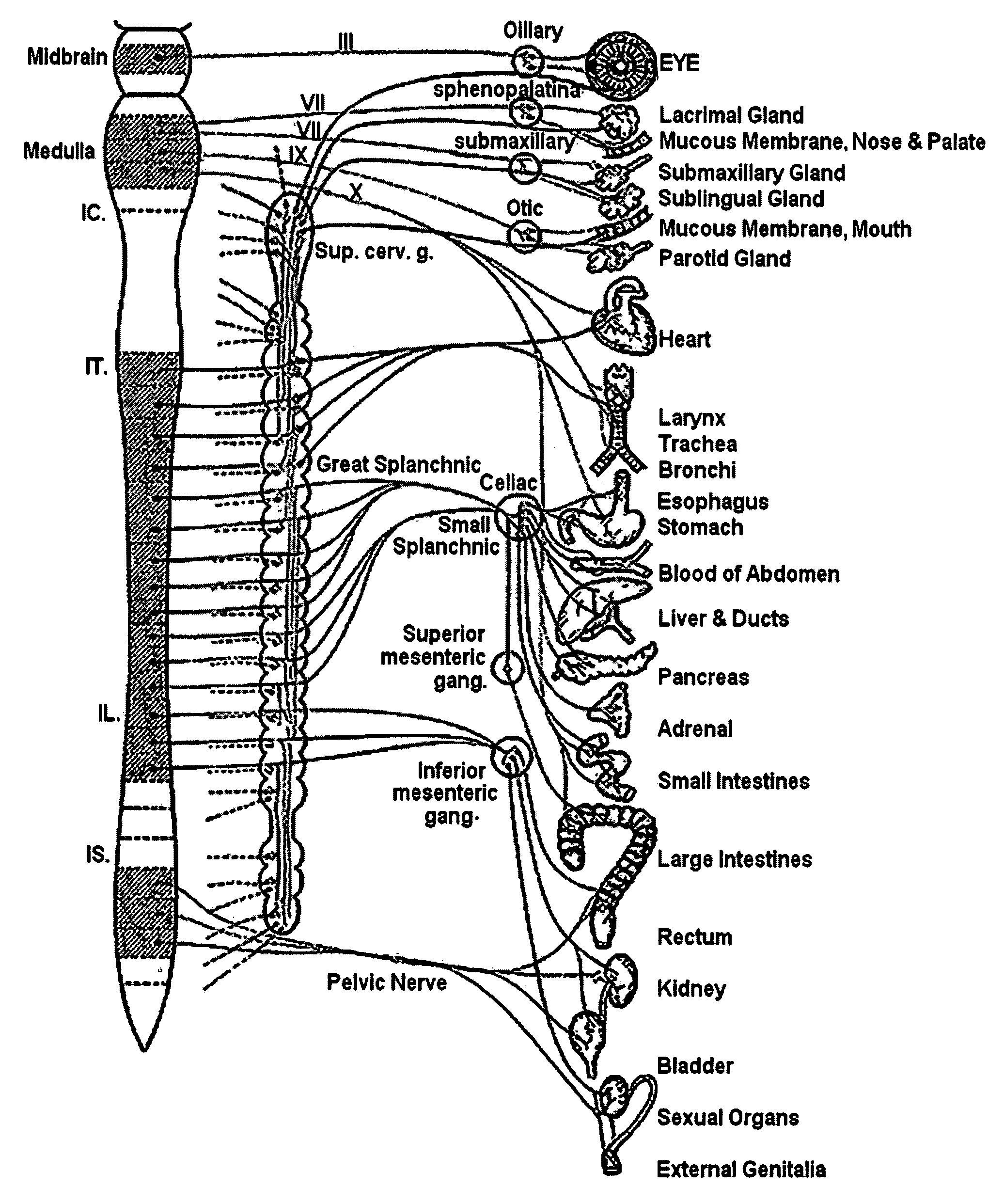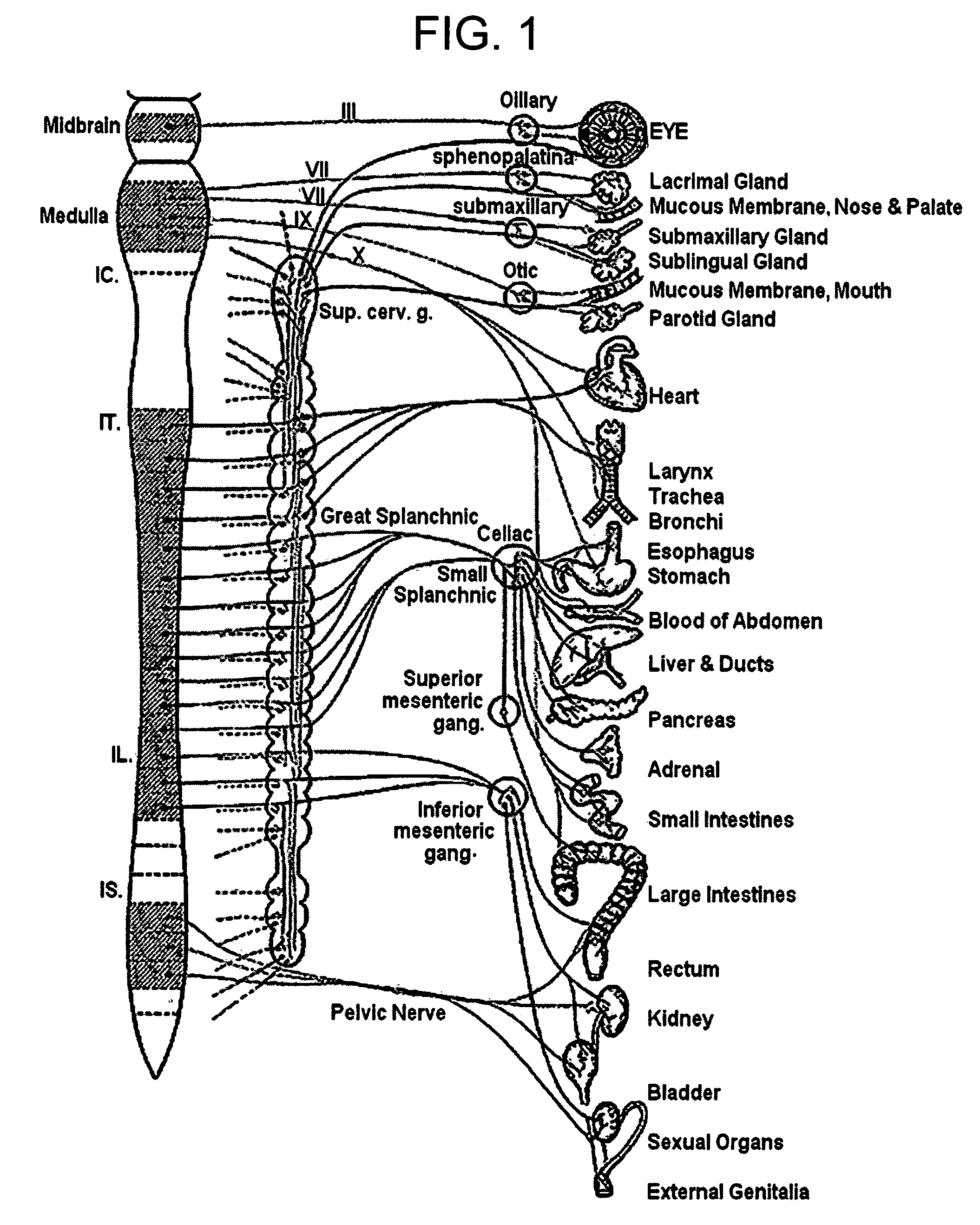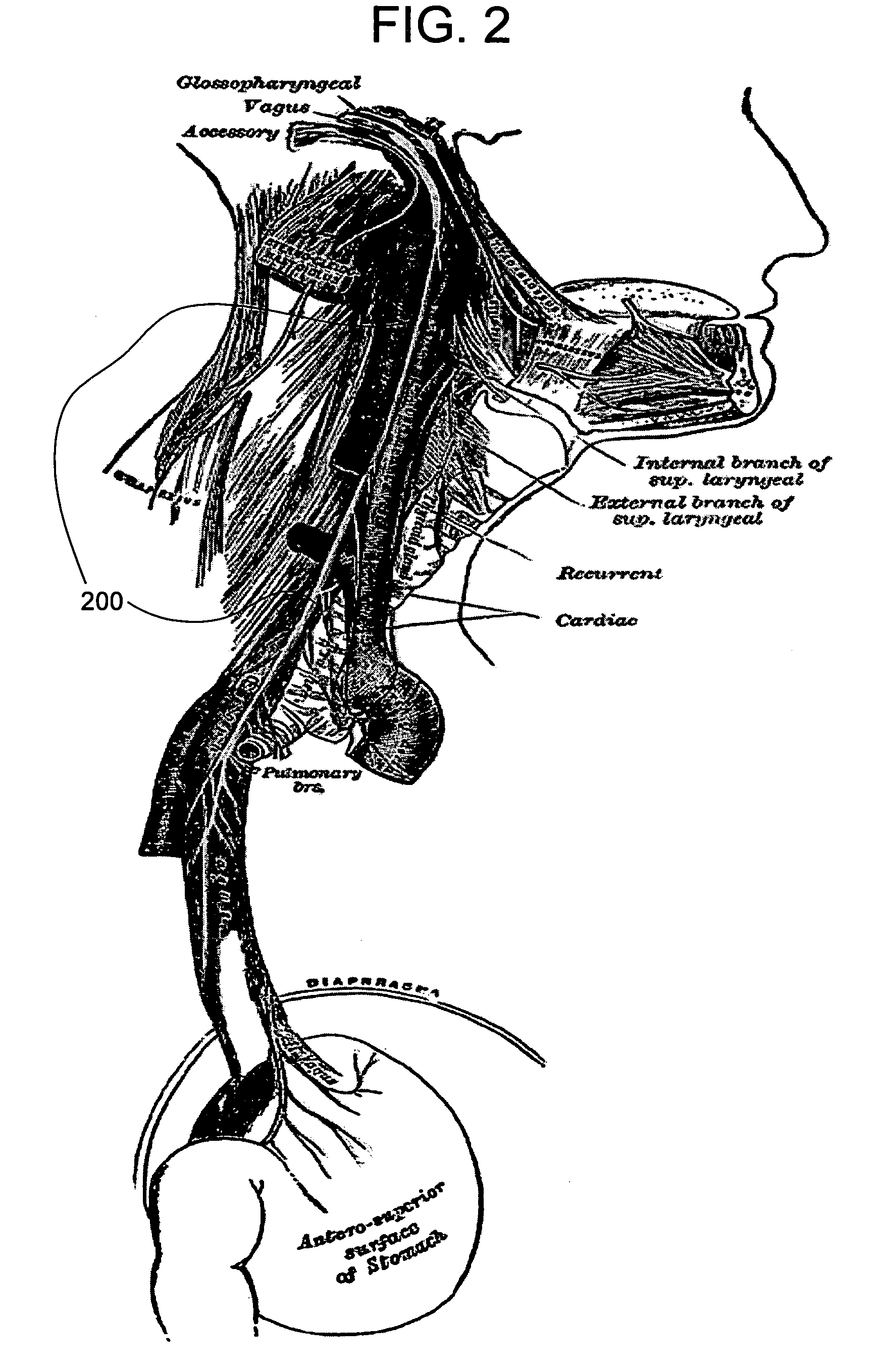While there are a variety of different techniques and mechanisms that have been designed to focus lesioning directly onto the target nerve tissue, collateral damage is inevitable.
In many cases, these medicinal approaches have side effects that are either unknown or quite significant, for example, at least one popular diet pill of the late 1990's was subsequently found to cause heart attacks and strokes.
Unfortunately, the beneficial outcomes of surgery and medicines are, therefore, often realized at the cost of function of other tissues, or risks of side effects.
While the therapeutic results of deep brain stimulation are promising, there are significant complications that arise from the implantation procedure, including stroke induced by damage to surrounding tissues and the neurovasculature.
These chemicals dilate the blood vessels, lowering blood pressure, and cause the blood vessels to leak fluid.
The chemicals also act on the lungs, causing the airways to constrict which makes breathing very difficult.
In some cases, anaphylaxis is mild, causing only hives and itching; however, anaphylaxis can be deadly.
This causes the person to choke and collapse.
Anaphylactic shock is fatal if not treated immediately and causes more than eight thousand deaths per year in the United States alone.
However, the triggers are mediated by a series of hypersensitivity responses that result in uncontrollable drop in blood pressure and airway occlusion driven by smooth muscle constriction.
Tragically, many of these patients are fully aware of the severity of their condition, and die while struggling in vain to manage the attack medically.
Among the most popular medications for treating anaphylaxis is epinephrine, commonly marketed in so-called “Epi-pen” formulations and administering devices, which potential sufferers carry with them at all times. In addition to serving as an extreme bronchodilator, epinephrine raises the patient's heart rate dramatically, and can result in tachycardia and heart attacks.
Smooth muscle surrounding the airways goes into spasm, resulting in constriction of airways.
Over time, this inflammation can lead to scarring of the airways and a further reduction in airflow.
This inflammation leads to the airways becoming more irritable, which may cause an increase in coughing and increased susceptibility to asthma episodes.
For some patients, however, these medications, and even the bronchodilators are insufficient to stop the constriction of their bronchial passages, and more than five thousand people suffocate and die every year as a result of asthma attacks.
The pulse is the most straightforward way of measuring the heart rate, but it can be deceptive when some strokes do not lead to much cardiac output.
For instance, hypertension (increased blood pressure) increases the left ventricular afterload because the left ventricle has to work harder to eject blood into the aorta.
However, because of its long-term indirect effects (and also as an indicator of other problems) it is a serious worry to physicians diagnosing it.
Higher pressures increase heart workload and progression of unhealthy tissue growth (atheroma) that develops within the walls of arteries.
The higher the pressure, the more stress that is present and the more atheroma tend to progress and the heart muscle tends to thicken, enlarge and become weaker over time.
Low blood pressure may be a sign of severe disease and requires more urgent medical attention.
When blood pressure and blood flow is very low, the perfusion of the brain may be critically decreased (i.e., the blood supply is not sufficient), causing lightheadedness, dizziness, weakness and fainting.
The system usually requires a few seconds to fully adjust and if the compensations are too slow or inadequate, the individual will suffer reduced blood flow to the brain, dizziness and potential blackout.
Hypotension often accompanies and complicates many other systemic health problems, such as anaphylaxis and sepsis, leading to anaphylactic shock and septic shock, making it more difficult to address the underlying health problem.
However, when accompanied with refractory arterial hypotension, sepsis becomes septic shock.
Septic shock is a serious medical condition causing such effects as multiple organ failure and death in response to infection and sepsis.
Cytokines TNFα, IL-1β, IL-6 released in a large scale inflammatory response may result in massive vasodilation, increased capillary permeability, decreased systemic vascular resistance, and hypotension.
Hypotension reduces tissue perfusion pressure, and thus tissue hypoxia ensues.
 Login to View More
Login to View More  Login to View More
Login to View More 


